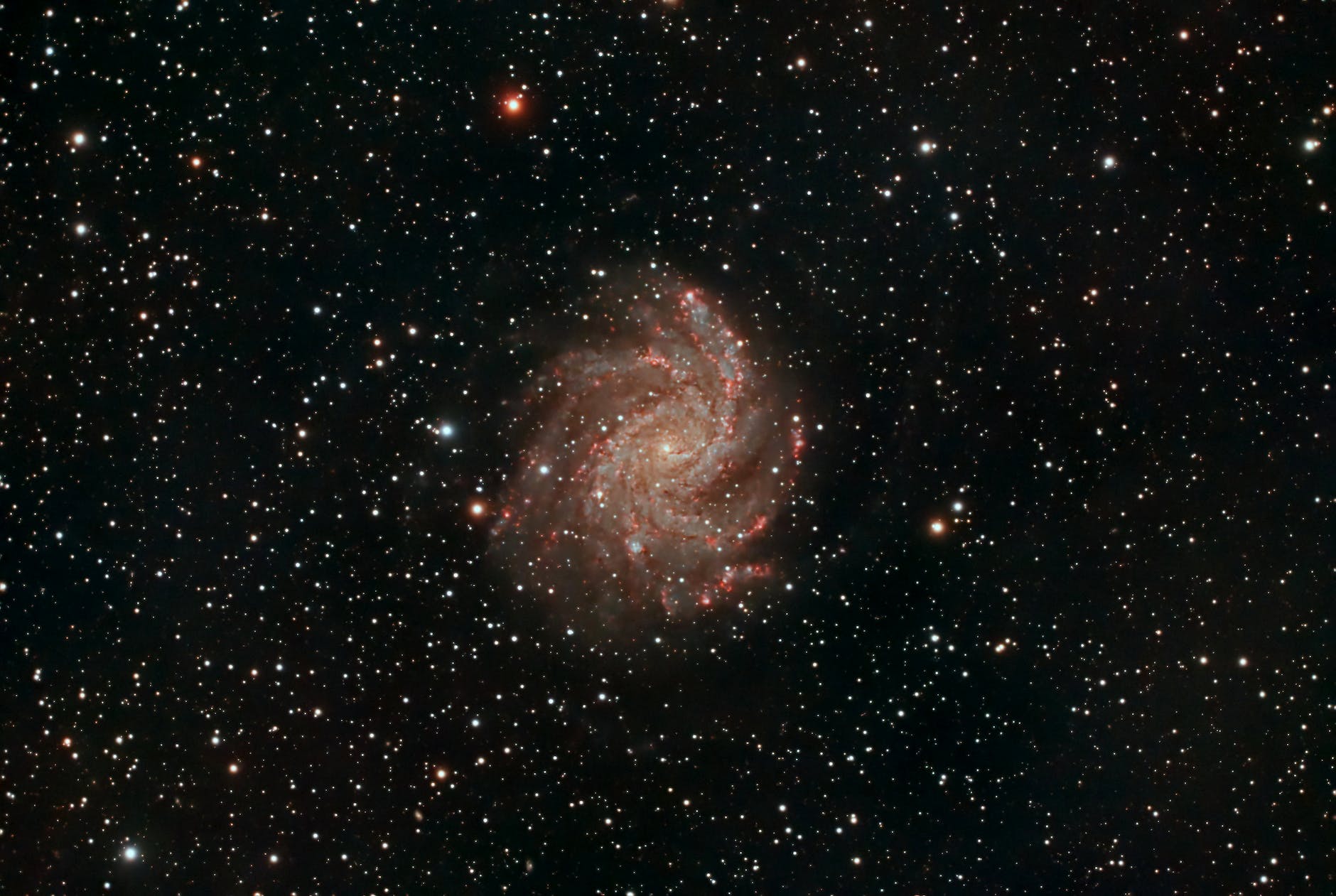Capturing the Cosmos in Your Lens: A Journey into the World of Astrophotography
Astrophotography is an awe-inspiring realm that allows us to capture the beauty of the universe in stunning detail. Whether you’re an amateur astronomer or a seasoned stargazer, there’s a fascinating concept known as the “100 Rule” that can elevate your astrophotography game to new heights. In this in-depth guide, we’ll delve into what the “100 Rule” is all about and how you can harness its power to create mesmerizing images of the night sky.
The Allure of Astrophotography
Before we dive into the intricacies of the “100 Rule,” let’s take a moment to appreciate the allure of astrophotography. Imagine standing beneath a star-studded canopy, capturing the cosmic wonders that have enthralled humanity for millennia. From the mesmerizing Milky Way to the distant galaxies, nebulae, and planets, astrophotography allows us to explore the mysteries of the universe through our camera lenses.
But, as any astrophotographer will tell you, capturing the majesty of the cosmos comes with its challenges. The night sky, though enchanting, can be elusive. The stars and celestial objects that twinkle above us are often dim and distant, making them tricky subjects to photograph. This is where the “100 Rule” steps in as a valuable tool to overcome these challenges and achieve stellar results.
Deciphering the “100 Rule”
The “100 Rule” in astrophotography is a simple yet effective guideline that helps you determine the maximum exposure time for capturing sharp, pinpoint stars without trailing in your images. It’s a rule of thumb that considers the Earth’s rotation and the focal length of your camera lens to strike a balance between exposure time and star sharpness.
Here’s the essence of the “100 Rule”: Divide 100 by your lens’s focal length to find the maximum number of seconds you can expose your image without noticeable star trails. In mathematical terms, it can be expressed as:
Maximum Exposure Time (seconds)=100 x Focal Length (mm)
Now, let’s break down this rule further and understand how it works.
Focal Length: The Key Player
Your camera lens’s focal length is the critical factor that determines how much magnification your astrophotographs will have. A lens with a longer focal length, such as a telephoto lens, will magnify the stars and celestial objects more, while a wide-angle lens with a shorter focal length will capture a broader portion of the night sky.
For example, if you’re using a 50mm lens, applying the “100 Rule” would give you a maximum exposure time of 2 seconds (100 ÷ 50 = 2). In this case, you should aim to keep your exposure time under 2 seconds to avoid star trails.
Overcoming Earth’s Rotation
One of the challenges in astrophotography is the Earth’s rotation. As our planet spins on its axis, it causes celestial objects to appear as if they’re moving across the sky. If your camera’s exposure time is too long, this motion will result in star trails—a phenomenon where the stars appear as streaks instead of sharp points of light.
The “100 Rule” takes the Earth’s rotation into account by limiting your exposure time to a duration that ensures minimal star trailing. This ensures that your astrophotographs are crisp and detailed, capturing the beauty of the night sky as you intended.
Applying the “100 Rule” in Practice
Now that we’ve demystified the “100 Rule,” let’s explore how to put it into action for your astrophotography adventures.
Gear Preparation
- Choose the Right Lens: Select a lens with a focal length suitable for your astrophotography goals. Wide-angle lenses, typically in the range of 14mm to 35mm, are excellent for capturing expansive nightscapes, while telephoto lenses with focal lengths of 85mm and above are ideal for close-ups of celestial objects.
- Use a Sturdy Tripod: A stable tripod is essential for long-exposure astrophotography. Make sure your tripod is firmly planted to avoid any camera shake during the exposure.
- Remote Shutter Release: To prevent vibrations from pressing the camera’s shutter button, use a remote shutter release or a timer delay function on your camera.
Camera Settings
- Manual Mode: Set your camera to manual mode (M) to have full control over your settings.
- Wide Aperture: Open up your lens to its widest aperture (lowest f-number) to allow more light to reach the sensor. This is typically in the range of f/1.4 to f/2.8 for most lenses.
- ISO Setting: Start with a lower ISO setting, such as ISO 800 or 1600, to reduce noise in your images. You can adjust this based on the specific conditions and desired exposure.
- Focus on Infinity: Manually focus your lens to infinity to ensure that the stars are sharply captured. Use the camera’s live view mode for precise focusing.
- White Balance: Set your white balance to match the conditions, or shoot in RAW format for flexibility in post-processing.
Calculating Exposure Time
- Apply the “100 Rule”: Determine your lens’s focal length and use the rule to calculate the maximum exposure time that will prevent star trailing.
- Test and Adjust: Take test shots with various exposure times, gradually increasing or decreasing the duration until you achieve the desired results.
- Stacking: Consider using image stacking techniques to enhance the details in your astrophotographs. Stacking multiple short-exposure images can reduce noise and reveal more intricate features in the night sky.
Light Pollution and Location
- Light Pollution: Choose a dark sky location away from light pollution for optimal results. Light pollution can significantly affect the quality of your astrophotographs.
- Frame Your Shot: Compose your image, keeping in mind the celestial objects you want to capture. Experiment with foreground elements, like trees or landmarks, to add depth and interest to your composition.
Post-Processing
- RAW Editing: Process your images in post-production software like Adobe Lightroom or Photoshop. Adjust exposure, contrast, and color balance to bring out the best in your astrophotographs.
- Noise Reduction: Use noise reduction techniques to eliminate any unwanted noise that may be present in your images, especially if you’ve shot at higher ISO settings.
- Stacked Images: If you’ve used stacking, combine your images to create a final, detailed astrophotograph that showcases the beauty of the night sky.
Pushing the Boundaries
While the “100 Rule” serves as a valuable guideline, it’s important to note that astrophotography is not bound by strict rules. As you gain experience and confidence in your skills, you may find opportunities to push the boundaries and experiment with longer exposure times. Advanced techniques like star tracking mounts can enable exposures lasting minutes or even hours, revealing faint celestial wonders that were previously invisible.
Explore Further
As you embark on your astrophotography journey, here are some additional resources and tools that can enhance your skills and knowledge:
- AstroBackyard – A Comprehensive Guide to Astrophotography: Trevor Jones, an experienced astrophotographer, shares tutorials, gear reviews, and tips to help you excel in astrophotography.
- DeepSkyStacker – Image Stacking Software: DeepSkyStacker is a powerful software tool for stacking multiple astrophotography images to reduce noise and improve image quality.
- International Dark-Sky Association (IDA): The IDA provides information about light pollution and promotes the preservation of dark skies for stargazing and astrophotography.
- Astrobin – Astrophotography Community: Join an online community of astrophotographers to share your work, seek advice, and connect with fellow enthusiasts.
The Cosmic Canvas Awaits
Armed with the knowledge of the “100 Rule” and the techniques to apply it, you’re ready to embark on a journey through the celestial wonders of astrophotography. The night sky is your canvas, and the stars are your paintbrushes. With practice, patience, and a touch of creativity, you can capture the cosmos in all its breathtaking beauty, one exposure at a time.
So, set up your equipment, head to a dark sky location, and let the magic of astrophotography unfold before your lens. The universe is waiting to reveal its secrets through your photographs, and the “100 Rule” is your key to unlocking its splendor.

